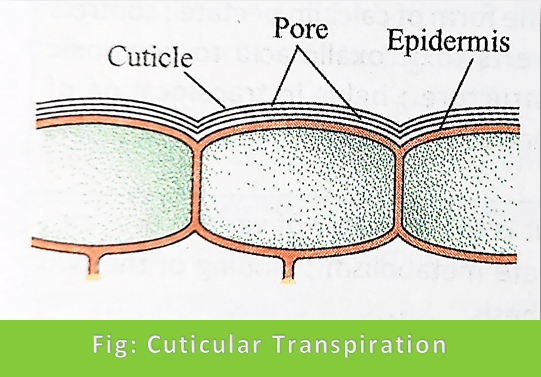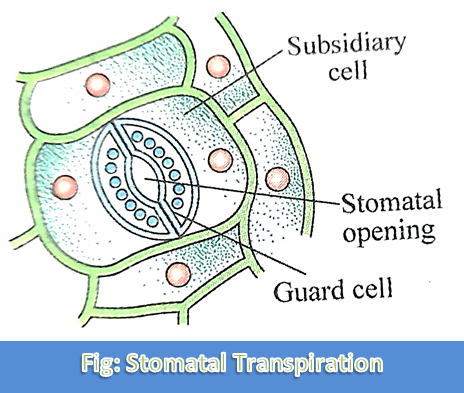Transpiration:
A small plant or herb during mid-day droops down due to the loss of water from the leaf surface, this is called Transpiration. The physiological process by which the loss of some amount of absorbed water takes place in the form of water vapor from the aerial parts of living land plants is known as Transpiration.
Transpiration mainly occurs through the stomata of the leaves, lenticels present in the bark, and cuticle present on the exposed plant surface. On the basis of the type of plant organs through which water is lost, there are three types of transpiration:
- Cuticular Transpiration
- Lenticular Transpiration
- Stomatal Transpiration
Cuticular Transpiration:
The physiological process of loss of water in the form of water vapor through the cuticle of the exposed surface of plant organs is known as cuticular transpiration. The cuticle is a waxy layer on the leaf covering the epidermis and preventing transpiration. But there are some scattered pores present in the cuticle which results in the loss of water all through the day and night.

Lenticular Transpiration:
The physiological process of water loss in the form of water vapor through the lenticels of woody stems and fruit walls is termed lenticular transpiration.
Sturcture of Lenticel:
Lenticels are minute lens-shaped pores present in the secondary epidermis of woody stem and fruit walls. They are constituted of a lost mass of complementary cells and intermediate air spaces. The minute opening of the lenticular always remains open because of the absence of guard cells.

Stomatal Transpiration:
The process of loss of water in the form of water vapor through the openings of stomata is termed stomatal transpiration. It accounts for 80 – 90% of transpiration in plants. The stoma is a simple opening, guarded by guard cells, they have a sub-stomatal chamber surrounded by subsidiary cells.
